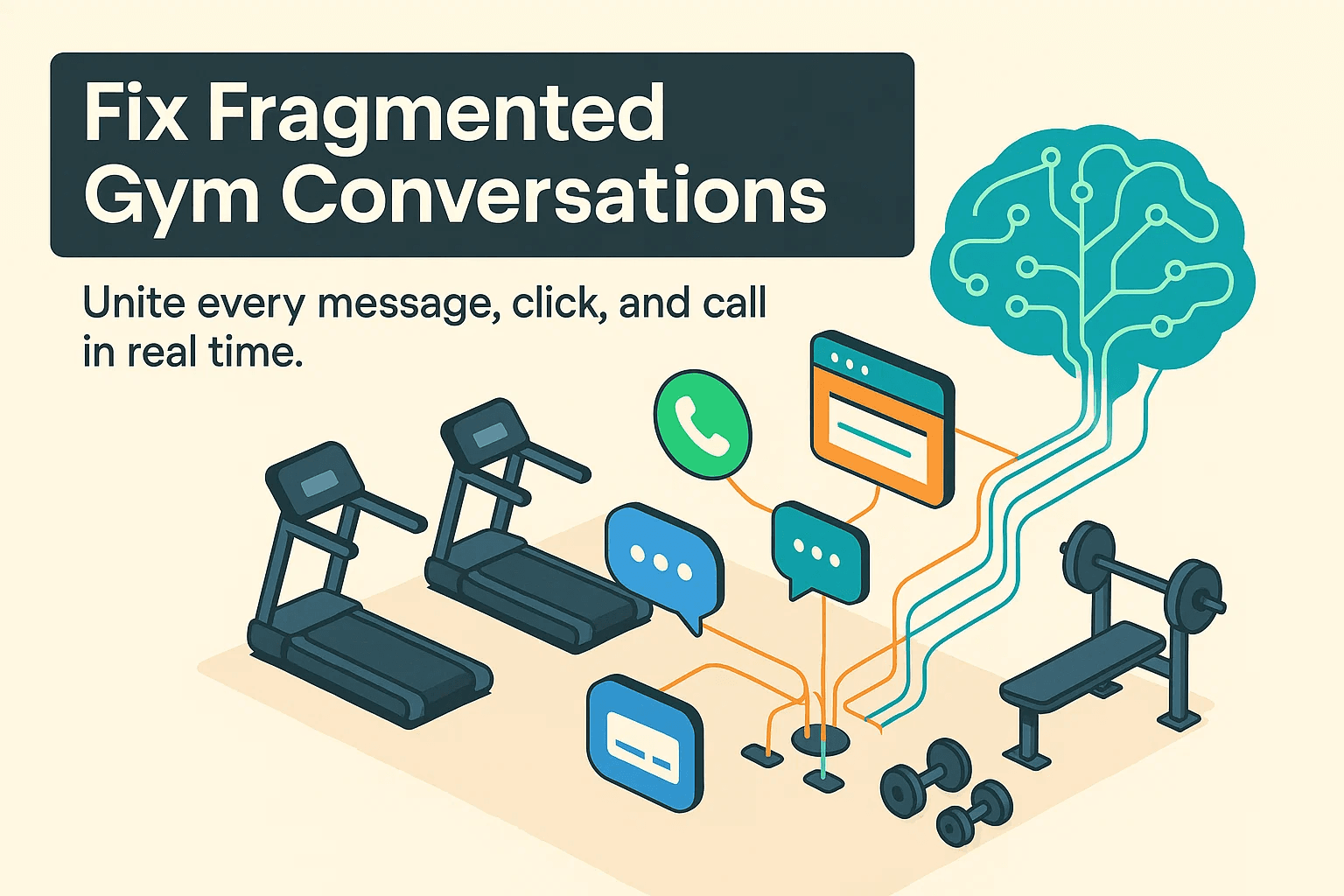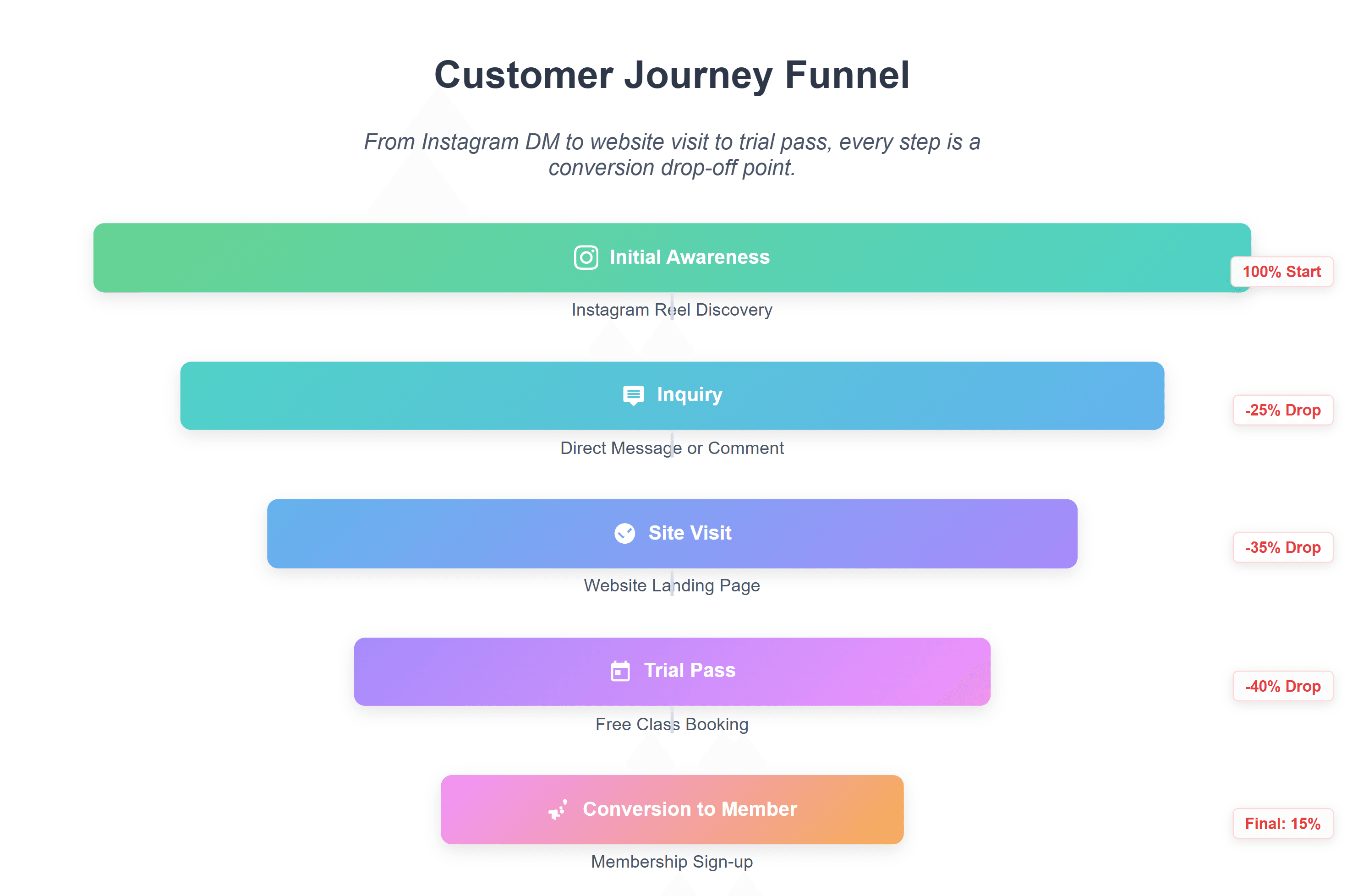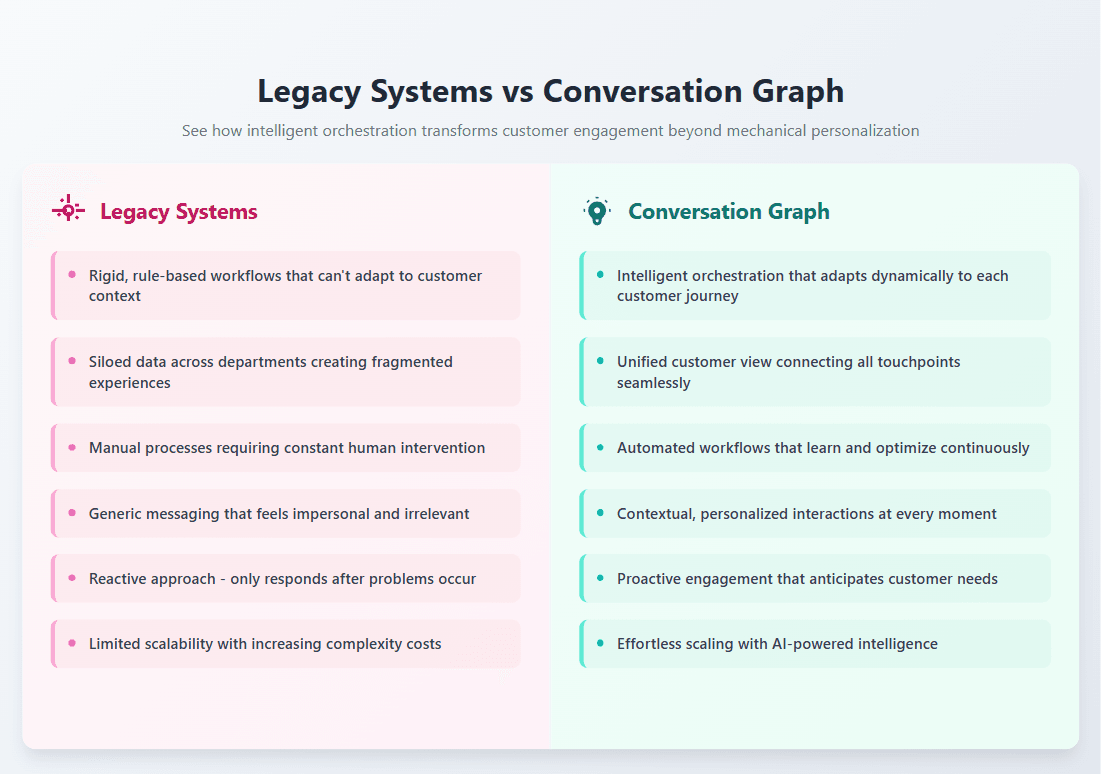Why Do You Need a Conversation Graph in Your Gym Marketing Plan?

The fitness industry is one of the most competitive spaces out there. Whether you run a boutique yoga studio, a neighbourhood CrossFit box, or a chain of full-service gyms, you’re fighting for attention in a world where consumers are bombarded with wellness choices. Getting someone to notice your gym is hard enough; converting them into a loyal member is even harder.
At the heart of this challenge lies a single problem: the customer journey has become fragmented, conversational, and fast-moving, but most gyms still market using slow, siloed tools.
A solution is emerging in the form of the Conversation Graph . A living memory of every interaction a prospect or member has with your brand, across every channel, in real time. For gyms, this could be the missing piece that turns casual interest into lifetime loyalty.
Let’s explore why.
The Gym Marketing Problem: Conversations Without Continuity
Think about the last time someone interacted with your gym:
They saw an Instagram reel of your new spin class.
Later, they DM’d your page to ask about trial sessions.
The next morning, they checked pricing on your website.
In the afternoon, they called to ask if you have weekend slots.
That evening, they got an automated email offering a 7-day pass.
In most gym marketing stacks, each of these touchpoints lands in a different silo: Instagram messages in Meta’s inbox, the call recording in a support system, the email in Mailchimp, the website visit in Google Analytics. None of them talks to each other.
The result? Disconnected experiences.
The prospect who just asked about trial slots still gets blasted with a generic “Join Now” campaign. The person who called about weekend timings gets retargeted with ads for weekday-only classes. The member who complained about locker room cleanliness still receives upsell nudges for premium plans.

Industry-wide, this is not a small issue. Surveys show that 65% of customers switch brands after a single bad digital experience. For gyms, where retention is the real driver of profitability, every broken interaction is revenue left on the treadmill.
Conversation Graph
A Conversation Graph is a unified, real-time ledger of everything a customer says, does, and feels while interacting with your gym. Instead of scattering interactions across platforms, it connects them into one living narrative.
Think of it as a brain for your marketing and sales stack. Every node on the graph could represent:
A Text inquiry about “weight-loss programs”
The tone of voice in a call where someone sounded hesitant about pricing
A click on your “trainer bios” page
A DM asking if you offer Zumba on weekends
The fact that they didn’t respond to your last follow-up email
Unlike traditional CRMs, which only log structured fields like “Lead Source = Instagram” or “Status = Hot,” a Conversation Graph captures intent, sentiment, and context in real time.
This means your marketing isn’t guessing anymore, it’s responding intelligently, based on the full story.
Why Gyms Specifically Need It
1. Timing is Everything (Golden Moments)
Fitness decisions are emotional and perishable. Someone browsing your membership plans at 10 p.m. on a Sunday is motivated right now. If you wait until Monday morning to call, they may have already signed up at a competitor’s gym.
A Conversation Graph ensures that when intent spikes, a trial pass download, a repeat visit to the class schedule, an SMS inquiry, an AI agent can instantly trigger the right action: a Text nudge, a personalized offer, or a trainer call back.
2. Fitness Journeys Are Multi-Channel
Your prospects and members don’t live in one channel. They mix Instagram, SMS, email, calls, and even offline visits. Without a unified memory, each channel acts blindly. With a Conversation Graph, context travels with the member, so your SMS response “remembers” the question they asked on Instagram.
3. Unstructured Data Holds the Truth
A member’s decision to stay or leave often isn’t in structured fields like “last visit date.” It’s in unstructured cues:
The frustration in their support call was about billing.
The hesitation in a SMS message: “Thinking about freezing membership for a while.”
The excitement in a DM: “Do you also have morning yoga?”
Traditional tools ignore 80% of unstructured data. A Conversation Graph treats it as first-class input, ensuring your marketing responds to human signals, not just clicks.
4. Member Retention is the Profit Engine
Acquiring a new gym member is expensive—often 5–7x more than retaining an existing one. The Conversation Graph helps identify early churn signals (missed classes, negative sentiment in chats) and trigger retention actions in real time. Bain & Company found that a 5% improvement in retention can lift profits by 25–95%.
How a Conversation Graph Transforms Gym Marketing
Lead Generation
Instead of running broad “Join Now” ads, you can target based on live signals:
“Show ads to people who mentioned ‘weight loss’ or ‘summer body’ in chat in the last 7 days.”
Conversion
When a lead asks about pricing on SMS, the agent sees they also attended a Zumba trial last week and tailors the offer: “Our Zumba + Strength bundle is just ₹2,499/month—shall I reserve a spot?”
Onboarding
A new member downloads your app, books two spin classes, and ignores yoga. The Conversation Graph nudges them with: “Want to try your first yoga class free this weekend?”
Retention
If sentiment drops in support chats (“Locker rooms are too crowded”), the system suppresses upsell campaigns until the issue is resolved, avoiding tone-deaf outreach.
Cross-Sell & Upsell
Members who show interest in personal training via a DM get automatically prioritized for a trainer call back, with context of what they’ve asked before.
Why Legacy Systems Can’t Do This
Legacy CRMs and marketing tools were built for structured data, forms, clicks, and checkboxes. They weren’t designed to store “hesitant tone in SMS chat” or “frustrated about billing on a call.”
Even when gyms bolt on AI features chatbots, lead scores, automated emails, they still operate in silos. That’s mechanical personalization, not intelligent orchestration.

The Conversation Graph changes the architecture. It treats every conversation as the workflow, the trigger, and the data. Instead of three tools fighting to stitch together the journey, one system remembers, reasons, and responds.
Practical Steps for Gyms
1. Start With Data Foundation
Unify all member records into one profile: connect CRM, SMS, Instagram, website, and call logs.
2. Integrate Into the Conversation Graph
Feed structured and unstructured data into one timeline. Every chat, call, and click becomes query able.
3. Deploy Starter Agents
Use AI agents for specific pain points first—like responding to trial pass inquiries within 2 minutes, or nudging members who missed 2 classes in a row.
4. Add Retention Triggers
Configure agents to detect churn signals (negative sentiment, drop in attendance) and trigger proactive outreach.
5. Build Feedback Loops
Measure what works Which offers get trials converted? Which messages save at-risk members? Refine continuously.
The Competitive Advantage
The fitness market is full of gyms offering similar equipment, trainers, and price points. What sets you apart is experience.
When a prospect feels like your gym “gets them” answers fast, remembers their needs, and nudges them at the right moment, they’re far more likely to join and stay.
A Conversation Graph gives you this edge:
Faster lead conversion
Higher retention
Smarter ad spend
A unified brand voice across channels
As Gartner notes, by 2026, brands that can integrate qualitative data into journeys will see churn rates drop significantly, while others will lose members to competitors who feel “always in sync”.
Final Word
Gyms don’t just sell workouts; they sell trust, motivation, and belonging. That means every conversation matters, from the first inquiry to the 100th renewal. But conversations lose their power when they live in silos.
The Conversation Graph turns those scattered signals into a living narrative your gym can act on, instantly, intelligently, and at scale.
In a market where members can leave with a single click, that narrative may be the difference between being just another gym and becoming their fitness home.
